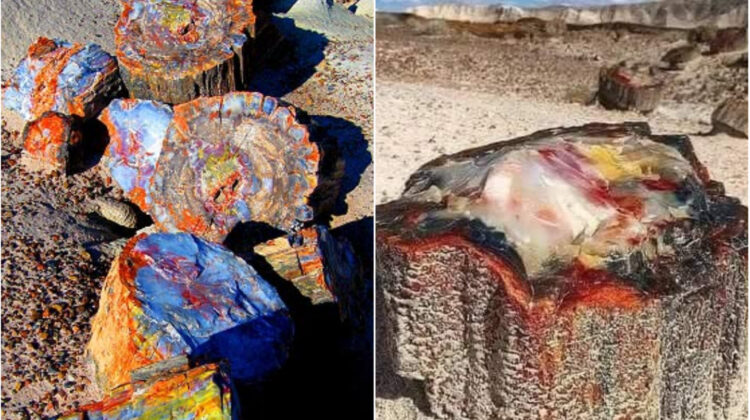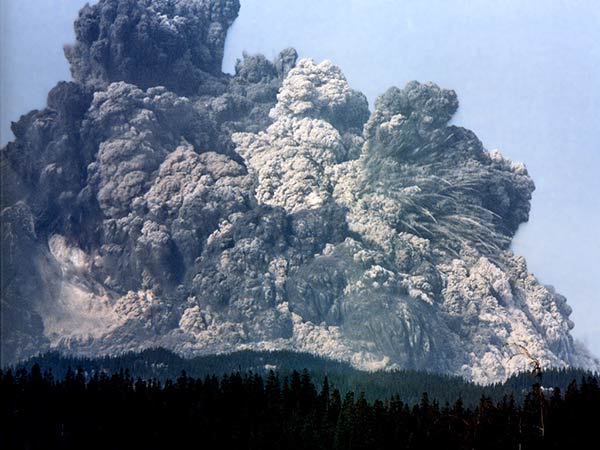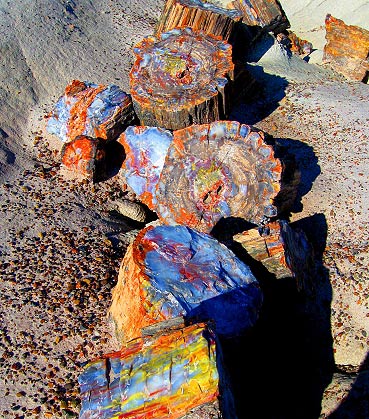
What is fossilized wood?
Fossilized wood is often part of a tree trunk preserved in a fossilized form. There are 3 types of fossilized wood: petrified wood, mummified wood, and submerged forests.
What is petrified wood?
Petrified wood is a fossil in which the original organic materials (primarily wood and bark) have been substituted minerals in a slow process called permineralization. All organic materials are filled with minerals, which then solidify whilst the organic material disappears, leaving behind mineral rocks with the same structure of the original tree. This also explains why the colours of petrified wood vary so greatly, as per the minerals in the surrounding earth and water.
What is the difference between petrified and fossilized wood?
Petrified wood is just a type of fossilized wood. The other types of fossilized wood are mummified wood, and wood found in submersed forests.
HOW IS FOSSILIZED WOOD FORMED?

To become petrified, a tree must become buried in an environment with little to no oxygen. This usually happens in nature following a volcanic explosion when the tree is covered in volcanic ash. Without oxygen, the wood cannot rot.
Over time, minerals such as manganese, iron and copper penetrate the wood from surrounding water and earth. The minerals eventually take the place of the wood, giving the now fossilized wood a bright array of colours depending on the minerals in the surrounding soil. Pure quartz is colourless, but combined with contaminants, the quartz crystals take on different colours and tones such as yellow, orange or red. The end result is fossil wood – a colourful collection of minerals that take on the exact form of the original tree or trunk.
Petrification is the only process in the world in which a once living organism is transformed to mineral whilst remaining visibly very similar, conserving the original structure even down to microscopic details. The process of petrification is fundamentally different to that that creates other types of fossil, which in general have been formed by compression or impression of the original organism in mud or earth.
How long does the petrification process take?
In nature petrification can occur in just 5,000 to 10,000 years. Even though scientists in a Washington laboratory have managed to simulate the petrification process in a short period of time, in nature, most cases of petrification took place during the Triassic, Jurassic e Cretaceous periods – 50 – 260 million years ago.
It may sometimes be hard to comprehend, but dinosaurs once roamed in these same forests!
What type of wood is petrified wood?
Most stone wood currently known to us comes from the age of the dinosaurs and is over 100 million years old. At this time, the main types of tree were Araucarie, Ceder, Ebony, Ginkgo and palms.
WHERE IS FOSSILIZED WOOD FOUND?
Petrified (or fossilized) wood is found in a range of locations all around the world: Argentina, Australia, Belgium, Brazil, Canada, China, The Czech Republic, Germany, Ecuador, Egypt, Greece, India, Indonesia, Italy, Libya, Madagascar, New Zealand, the Ukraine, the United Kingdom and the United States (South Dakota, Arizona, California, Mississippi, Colorado).
In the vast majority of these countries, removal of fossil wood is protected by National Park status or the stone forests are declared a world heritage site.
The most spectacular petrified forests in the world
Undoubtedly the most famous petrified forest in the world is that found in Arizona, USA.
THE HEALING PROPERTIES OF FOSSIL WOOD

Fossil wood is used in crystal therapy. Petrified wood is used to bring healing energies that offer physical and mental benefits. Fossil wood is said to teach us patients, and help us to understand and allow are life to evolve in harmony and perfection.
Working with the energy from fossil wood is said to encourage us to live a more spiritual life in this physical world; encouraging people to respect and take care of the planet, finding a path of harmony between spirit and environment.
Many people like to use fossil wood to connect with the energy of the earth. Pieces of petrified wood are said to be ideal for this as they allow city dwellers to keep close to the vibrations of nature – even in a cement jungle.
WHAT DO THE COLOURS MEAN IN FOSSIL WOOD?
Petrified wood is characterized by its colour. During the petrification the wood is substituted by minerals from the surrounding soils. The colour of the resultant petrified (fossil) wood depends directly on the minerals within this soil and water.
Along with the native colours of the wood, we can also find an splendid array of other colours and tones such as red, green or blue. The colours only enhance the uniqueness and beauty of the fossilized wood. For example, the petrified wood of the Arizona desert is often an intense red colour, thanks to the high concentration of iron oxide in the desert earth.
Colour table of minerals in fossilized wood
Black: Carbon
Green and blue: Cobalt
Green and blue: Chrome
Green and blue: copper
Red, brown and yellow: irom oxide (rust)
Black, yellow: Magnesium oxide
Pink, orange: Manganese and iron

Leave a Reply